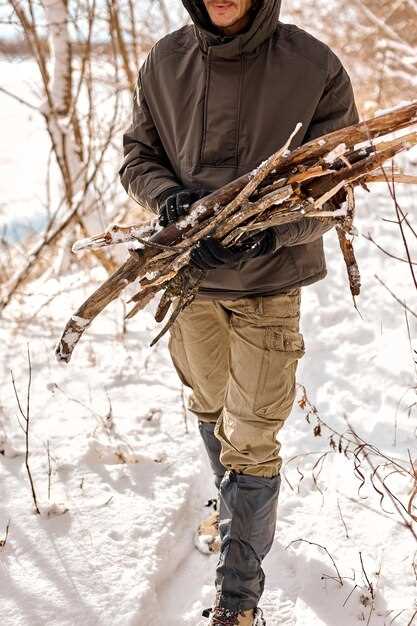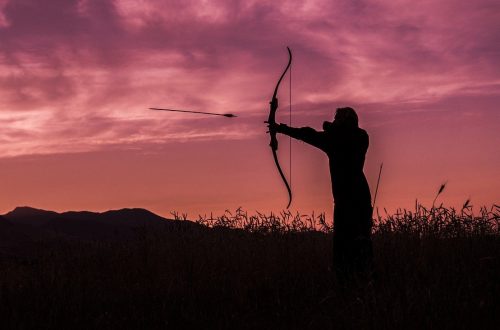
How to layer clothing for cold-weather hunting

When it comes to hunting in cold weather, the choice of clothes can make a significant difference in both comfort and performance. Cold temperatures, coupled with wind and moisture, can quickly lead to discomfort and distraction, hindering a hunter’s ability to remain focused. Therefore, understanding the principles of layering clothing effectively is essential for staying warm and maintaining mobility during those long hours in the field.
The art of layering involves using different types of clothes to create a system that traps heat while allowing moisture to escape. A proper layering system typically consists of three main layers: the base layer, the insulation layer, and the outer layer. Each layer serves a specific purpose and contributes to an overall strategy that can enhance your hunting experience in chilly conditions.
In this article, we will delve into the various layering techniques that can optimize your cold weather hunting gear. We’ll explore the materials best suited for each layer, how to choose the right pieces to ensure versatility, and tips for adjusting your layers throughout the day to adapt to changing weather conditions. By mastering these strategies, you can significantly improve your chances of success while staying warm and comfortable in the great outdoors.
Choosing the Right Base Layer for Heat Retention

When it comes to hunting in cold weather, selecting the appropriate base layer is vital for maintaining warmth and comfort. The base layer serves as the foundation of your clothing system, directly in contact with your skin, and plays a crucial role in heat retention.
There are several factors to consider when choosing a base layer. First and foremost, material is key. Fabrics such as merino wool and synthetic blends offer excellent thermal insulation while wicking moisture away from the body. Merino wool is particularly appreciated for its natural warmth and breathability, making it an exceptional choice for extended hunts. On the other hand, synthetic materials are often lighter and dry more quickly, which can be beneficial during high-intensity activities.
Another important aspect is fit. A snug, fitted base layer will trap warmth effectively and reduce the risk of cold air penetrating the clothing. However, it should not be so tight that it restricts movement or blood circulation. Aim for a balance between warmth and mobility to ensure comfort during long periods of inactivity while hunting.
Consider the weight of the base layer as well. In colder conditions, a mid-weight base layer may be necessary, providing adequate insulation without bulk. For milder temperatures, a lightweight option might suffice. Having multiple layers available allows for better adaptability to changing weather patterns during your hunting expedition.
Finally, pay attention to the seam construction of the clothing. Flatlock seams minimize chafing and enhance comfort, especially when layering. Avoid any designs that may irritate the skin during prolonged use, as discomfort can distract from the task at hand. Choosing a high-quality base layer that addresses these factors will significantly contribute to your success while hunting in cold weather.
Insulation Options: Down vs. Synthetic for Cold Conditions

When it comes to hunting in cold weather, choosing the right insulation is crucial for maintaining body heat and ensuring comfort. Two popular insulation materials are down and synthetic fibers, each with its own benefits and drawbacks.
Down insulation, made from the soft under feathers of ducks or geese, is renowned for its exceptional warmth-to-weight ratio. It provides excellent compressibility, allowing hunters to pack it easily. Moreover, down retains warmth even when compressed, which can be advantageous in varying activity levels during hunting. However, down insulation has significant drawbacks. It loses its insulating properties when wet and takes a long time to dry, making it less suitable for wet or humid conditions often encountered in the field.
Synthetic insulation, on the other hand, is made from polyester fibers designed to mimic the insulating properties of down. One of the key advantages of synthetic insulation is its ability to maintain warmth even when wet. This resilience makes it a preferred choice for hunting in damp or unpredictable weather. Additionally, synthetic options tend to dry faster than down, allowing for quick recovery in wet conditions. However, they often weigh more and may not provide as much warmth for the same pack size compared to high-quality down.
Ultimately, the choice between down and synthetic insulation for cold-weather hunting will depend on the specific conditions a hunter expects to encounter. For dry and cold environments, down is a lightweight choice that offers superior warmth. Conversely, for wet and variable climates, synthetic insulation provides reliable performance and peace of mind, ensuring hunters stay warm and comfortable throughout their adventures.
Outer Layer Considerations: Weather Resistance and Mobility
Choosing the right outer layer for cold weather hunting is crucial to ensure both comfort and effectiveness. The outer layer serves as your first line of defense against the elements while providing the necessary mobility to make accurate shots and navigate rugged terrain.
When evaluating outer layer clothing options, consider the following key factors:
- Weather Resistance:
- Waterproofing: Look for materials with waterproof ratings. Fabrics such as Gore-Tex or other breathable membranes keep you dry while allowing moisture to escape.
- Windproofing: A good outer layer should block cold winds. Windproof fabrics significantly reduce heat loss and increase comfort.
- Insulation: Insulated outer layers provide additional warmth. Look for options with synthetic insulation that maintains properties even when wet.
- Mobility:
- Fit: The outer layer should offer a balance between a snug fit and enough room for layering underneath. Ensure mobility isn’t compromised with restrictive designs.
- Flexibility: Choose clothes that utilize stretch materials or articulated designs for ease of movement while crouching, climbing, or aiming.
- Weight: Lightweight options can enhance mobility. Heavier fabrics may provide warmth but can hinder quick movements, so strike the right balance for your hunting style.
Additionally, consider color and camouflage patterns suited for your hunting environment. The right outer layer will blend seamlessly, providing an advantage in visibility without compromising weather resistance or mobility.
Ultimately, the right choice of outer layer clothing is essential for a successful hunting experience in cold weather. Proper attention to weather resistance and mobility will keep you comfortable, allowing you to focus on your hunt.




